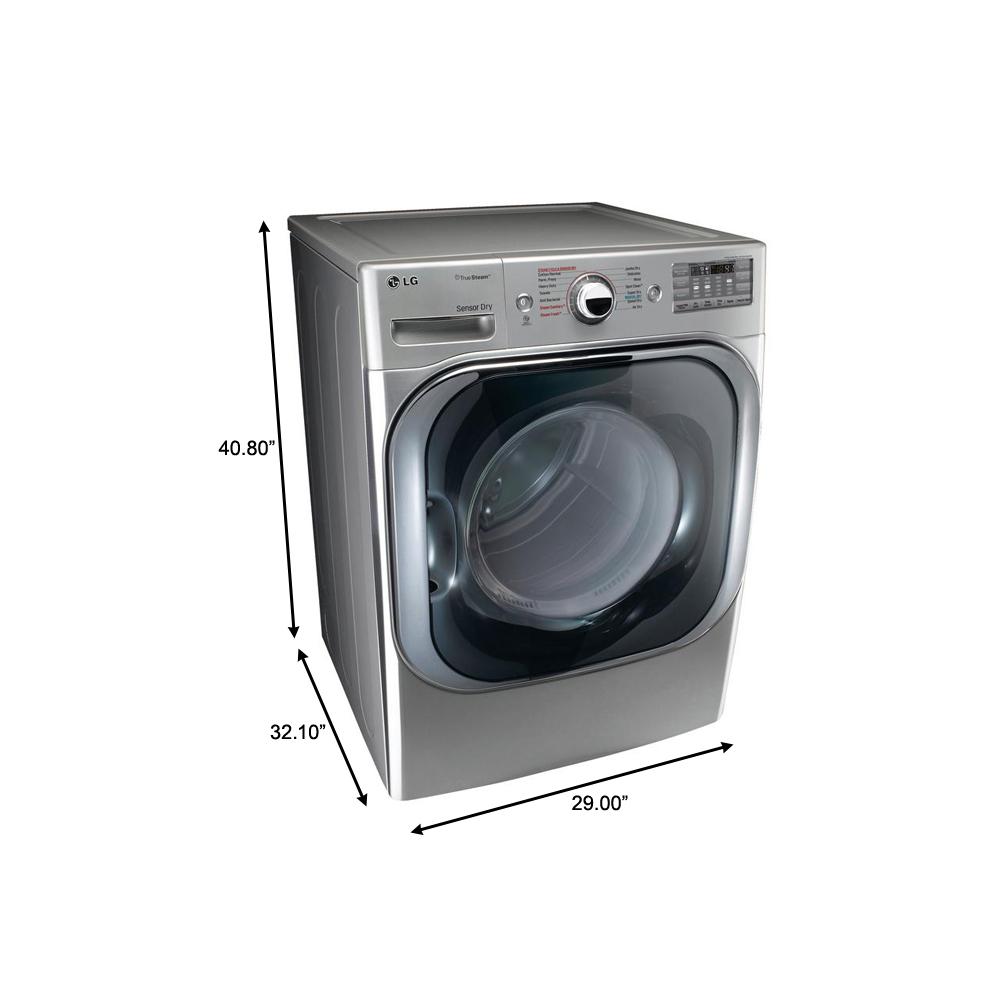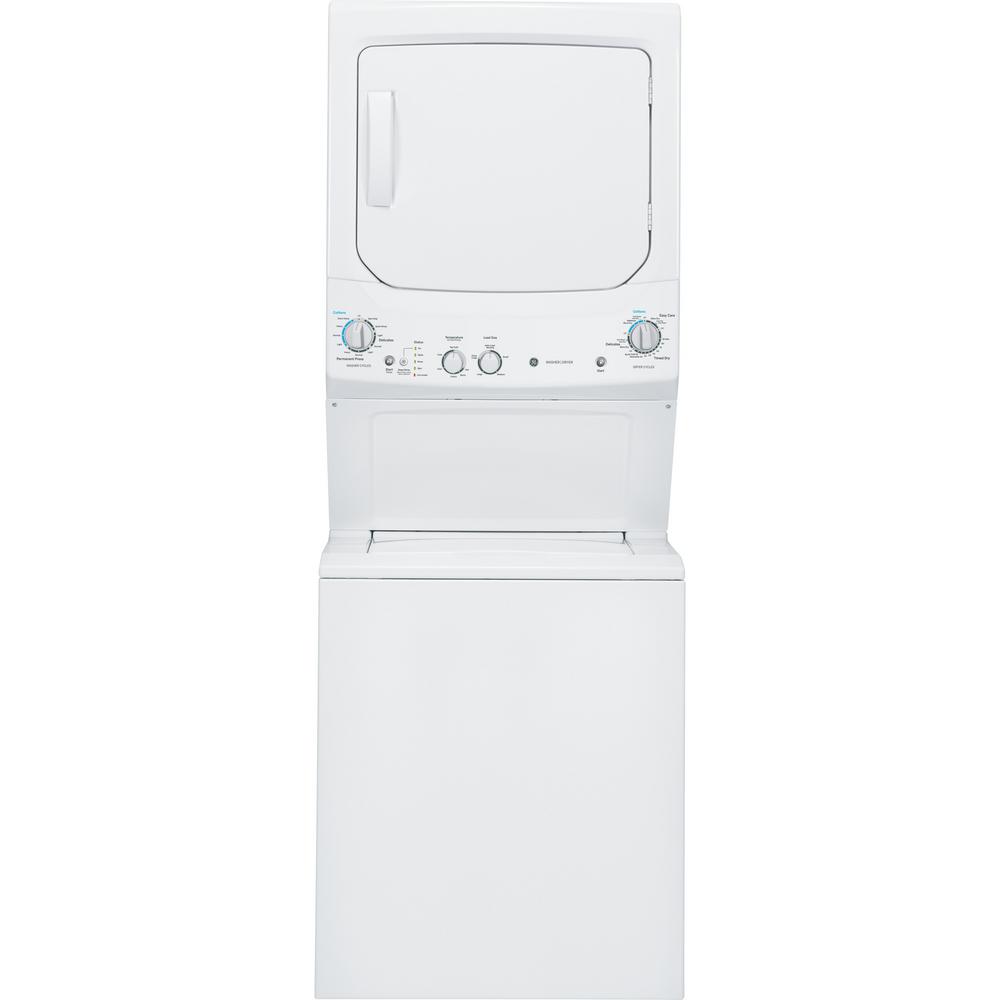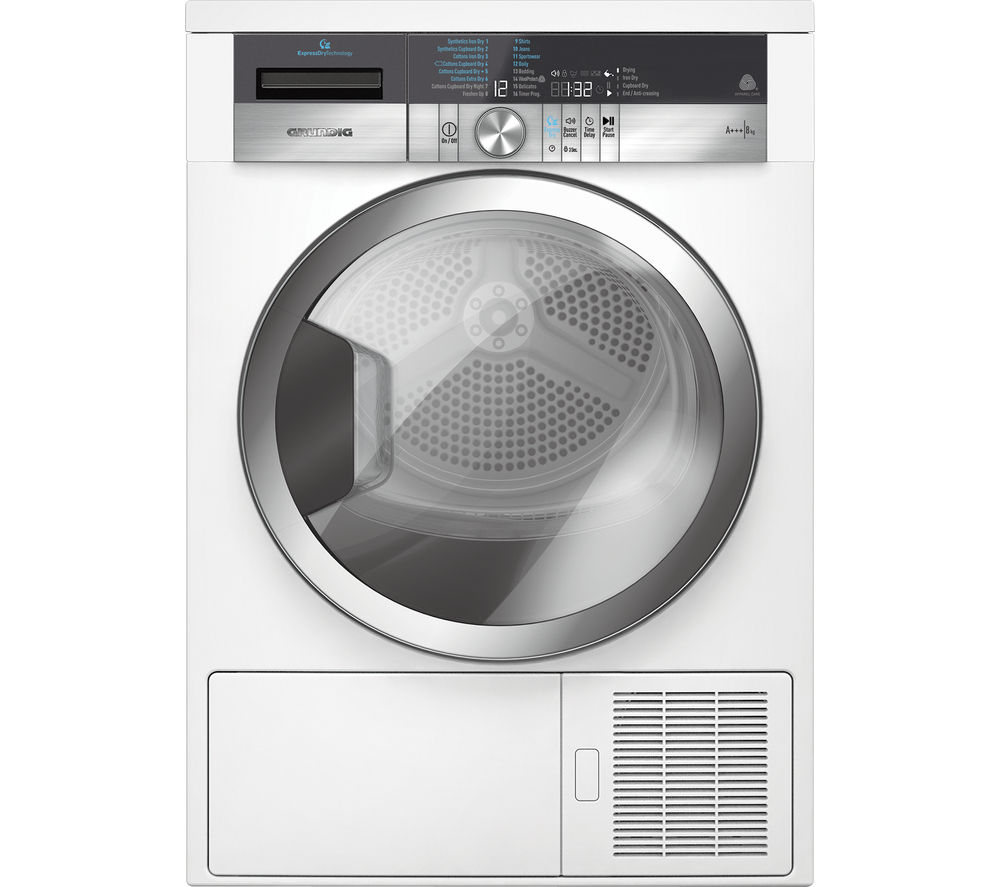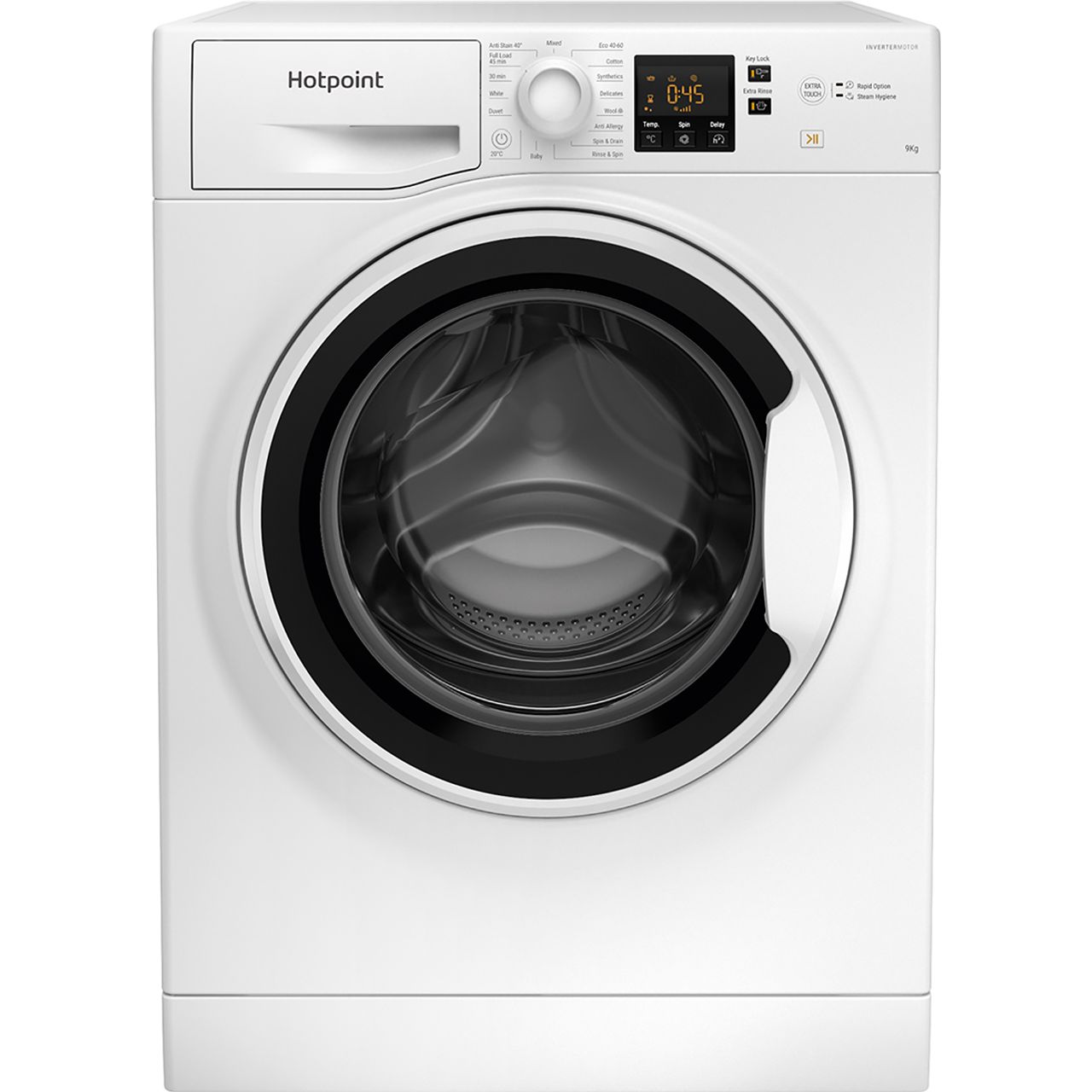LG Electronics 9.0 cu. ft. Stackable Front Load Electric Dryer w/ TrueSteam, SteamFresh & Pedestal Compatible in Graphite Steel
Dryer fits king-size comforter & full set of bedding in one load. TrueSteam creates real steam to reduce wrinkles, odor, & ironing. SpotClean uses the power of steam to remove stains in the dryer.
LG’s Ultra large 9.0 cu. ft. Steam Dryer performs big enough for your most ambitious loads. Smart enough to make sure everything dries perfectly with 14 drying programs, including, Steam Fresh, Steam Sanitary, Wool, Speed Dry, Air Dry and Super Dry. Steam technology reduces wrinkles and odors and practically eliminates the need for ironing. Optimum drying time is continuously monitored with the Sensor Dry system. Beautiful.
-
14 drying cycles with sensor dry: Cotton/normal, perm. Press, towels, delicates, heavy duty, steam fresh, steam sanitary, spot clean, anti-bacterial, jumbo dry, wool, super dry; manual dry cycles: speed dry and air dry
- 9.0 cu. ft. of capacity to accommodate the largest loads, such as a king size comforter and full set of bedding in a single load
- Intelligent electronic control panel with dual LED display and Dial-A-Cycle makes it easy to find the right setting for each load
- Our sensor dry system measures the moisture levels during the cycle and automatically adjusts the drying time, assuring you get dry laundry every time, LG’s speedDry cycle can get clothes dry in just 15 minutes or just pop your dry clothes in for a tumble on the wrinkle care cycle to reduce creases
- Got a small stain or spot? Our SpotClean Cycle is designed to use the power of steam to effectively remove stains and freshen clothes right in the dryer.
- True steam technology generates real steam to reduce wrinkles and odors, practically eliminating the need for ironing
- The SteamFresh cycle refreshes and reduces wrinkles in up to 5 garments at a time with one, 20 -minute dryer cycle
- SteamSanitary Cycle safely sanitizes items marked as non-washable
- Say so long to static, The ReduceStatic option virtually eliminates static cling by lightly moistening clothes to make ironing easier and more efficient
- The easy iron option virtually eliminates static cling
- If you ever experience an issue with your LG dryer, you don’t have to worry. The SmartDiagnosis feature helps the service center diagnose problems over the phone, or with a simple app on your smart phone, helping you minimize costly, inconvenient service calls
- FlowSense lets you know when your ducts need cleaning to avoid lint buildup, improves the dryer’s performance for greater efficiency and lower utility bills and gives you safer, worry-free operation with fewer service calls
- Can be stacked with a matching washer using a stacking kit (sold separately) or placed side by side on optional pedestals (sold separately)
- Dryer Duct and electrical cords are required for installation and will be offered separately during appliance checkout
- NeveRust Aluminized Alloy Steel drum is durable and built to last
- Inverter DirectDrive Motor is backed by a 10-year limited warranty
- Pedestals sold separately; use compatible pedestal WDP5V
- Stacking Kit sold separately; use compatible stacking kit KSTK2
- All compatible LG washers, dryer, SideKick pedestal washers, and laundry pedestals sold separately.
Additional information
| Depth With Door Open 90 Degrees (In) | 59 |
|---|---|
| Door Opening Height x Width (In.) | 16.93 x 16.93 |
| Product Depth x Height x Width (in.) | 32.1 x 40.8 x 29 |
| Certifications and Listings | CSA Listed |
| Manufacturer Warranty | 1 Year Parts and Labor |






by Cindy
Love! Holds such a large capacity which decreases the loads of laundry I have to do. Also has an auto dry sensor which automatically shuts off once your clothes are dry which prevents over drying and shrinking. So many features!
by Mike
Happy wife happy life. She loves it. Extremely quiet compared to the last one.
by John
Super fast.
by Phil
Great washer. Cleans well. Controls Vibration well. Sound loudness is good and better than our previous LG washer. We like the happy tones it makes when the loads are done. Being able to put larger loads into the washer is great. We chose not to have a floor pedestal below to put cabinets above it. Only gave it a 4 out of 5 stars because the water in the door does not fully drain out so when you open the door it drips out a small amount of water every time after use. It does not leak while operating.
by Rob
Great washer beautiful to look at also.
by James
I am very happy with this dryer. I purchased it to pair the washing machine since these appliances are visible from my kitchen. Although, I have only had this for a few weeks, I’m very satisfied with my purchase thus far.
by Lisa
This dryer is awesome! Takes no time to dry and my clothes come out wrinkle free (even when it’s at max capacity!!!) So glad we chose this washer and dryer set!
by Steve
Works great for me! So happy I got the 29″ LG WM8100HVA & DLEX8100V set. I got the WD200CV Sidekick & WDP5V pedestal drawer to match. I purchased this set to replace an old Kenmore top load set we purchased in 2002. What a huge difference! Wish I would’ve done it sooner… amazing at how much better this unit dries my clothes and larger items (like blankets and washable rugs)! Everything dries faster than it did in my old set and I usually set this unit on medium and that is more than enough heat to dry a large load is less than an hour (keep in mind the more heat, the more electric it will use so you’ll see it in your energy bill). Before I was having to run the old Kenmore dryer on high for 1-1/2 to 2 cycles of 70 min to get a larger load dry. This new unit has saved me so much time, and it’s definitely much easier on the clothes being on a slightly lower temp and being in there for less time. I’ve had the set for just over 6 months and no issues at all with dryer sheets sticking to the vent, or rust on the surface inside the unit. It really is a great dryer! Does really well on energy efficiency as well, hardly effects my usage at all which is awesome so it doesn’t make my electric bill go thru the roof. As for the steam function, I purchased this not realizing this wasn’t the same model I was expecting, and it wasn’t going to be plumbed in with the washer set. It’s a manual feature with a water tray drawer next to the control panel. It works fine really, but can be tedious if you have to add more water while using it. I did it with a couple non-washable rugs, and they came out beautifully refreshed so it functioned how it was meant to. I just had to add water a couple of times. Maybe cause it was the first time I added water to the machine? Either way for the minimal use of the steam feature, I’m OK with having to do that. All in all, it’s a solid unit and I would highly recommend it! If I had to buy again, I would choose this model in a heartbeat!